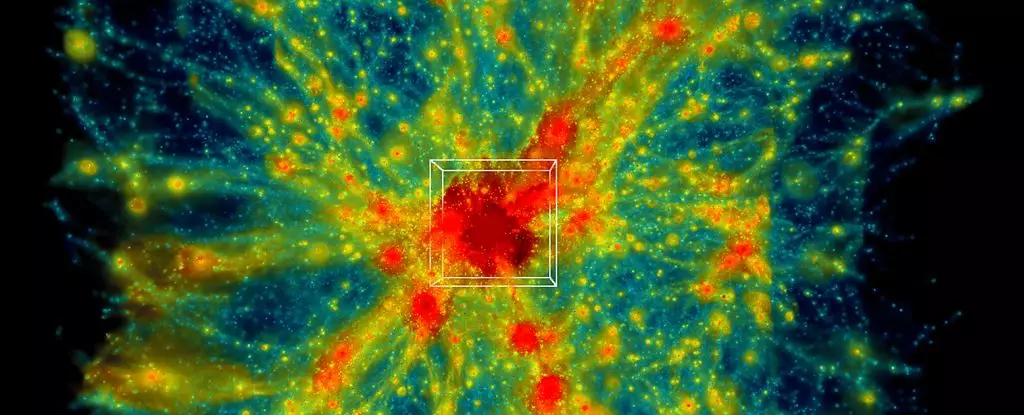A monumental achievement in the field of astrophysics has taken place at the Oak Ridge National Laboratory (ORNL) in the United States, where researchers have successfully executed the largest astrophysical simulation of the Universe to date. This ambitious project, dubbed ExaSky, harnessed the formidable power of the Frontier supercomputer, utilizing an astounding 9,000 computing nodes to examine a region of the Universe measuring over 31 billion cubic megaparsecs. As this simulation unfolds, it promises to illuminate numerous aspects of cosmic evolution, particularly focusing on the elusive essence of dark matter.
The nature of dark matter has long posed one of the most compelling mysteries in contemporary astrophysics. As noted by physicist Salman Habib from Argonne National Laboratory, two fundamental components make up the Universe: dark matter and conventional atomic matter. Dark matter, which interacts predominantly through gravitational forces, plays a key role in the formation and alignment of celestial bodies. To truly grasp the complexities of the Universe’s workings, scientists must simulate both the gravitational influences and the myriad physical interactions that occur among hot gases, stars, black holes, and galaxies.
When scientists attempt to ponder the cosmos, they are effectively peering back in time, recognizing that the events they observe are relics of the Universe’s former states. The slow progression of cosmic evolution makes real-time observation nearly impossible, necessitating the use of simulations as a pivotal tool for understanding the Universe’s past. With the ability to manipulate time within models, scientists can explore various scenarios, adjusting parameters to investigate how cosmic structures evolved or might evolve.
However, the road to these simulations is paved with challenges. The enormity and complexity of space make it incredibly difficult to create accurate representations of cosmic phenomena. Implementing sophisticated mathematical models alongside powerful computational capabilities is essential for achieving meaningful results. Nevertheless, researchers often encounter limitations that force them to exclude certain variables to enhance computational efficiency.
In prior experiments, valuable aspects of hydrodynamic simulations were overlooked due to constraints in computational power. As Habib explains, previous simulations could only approximate gravity-related dynamics, and comprehensive modeling of expansive areas surveyed by powerful telescopes was beyond reach. This sentiment speaks to the sheer scale of conventional astrophysical simulation, which often found itself hamstrung by the limitations of earlier technology.
The ExaSky simulation marks a significant leap forward, addressing the limitations of its predecessors thanks to advancements in algorithms, mathematics, and the Hardware/Hybrid Accelerated Cosmology Code required for its execution. With Frontier now standing as the world’s fastest supercomputer, the project has increased the simulation scope, thereby allowing scientists to more accurately model cosmic expansion.
The segment of the cosmos examined in this simulation represents a mere 0.001 percent of the Universe. This is a staggering fact, underscoring the potential for astounding results as the endeavor continues. Bronson Messer from ORNL notes that the extensive physical domain of the simulation is crucial for making direct comparisons with contemporary astronomical observations, especially those facilitated by exascale computing capabilities.
As the journey of ExaSky progresses, the scientific community eagerly awaits the insights that will emerge from this vast computational experiment. With the ambition to unravel the mysteries of dark matter and the forces that govern celestial formation and evolution, the implications of ExaSky extend far beyond its results; they herald a new age of astrophysical research where computational power and theoretical physics intersect in unprecedented ways.
The work being accomplished at ORNL is not merely a feat of technological prowess; it represents a shift in our understanding of the cosmos. As scientists continue to push the boundaries of what is achievable through simulation, the secrets of the Universe may slowly begin to reveal themselves. The ExaSky project stands as a testament to human curiosity and the enduring quest to comprehend the vastness of existence.


Leave a Reply